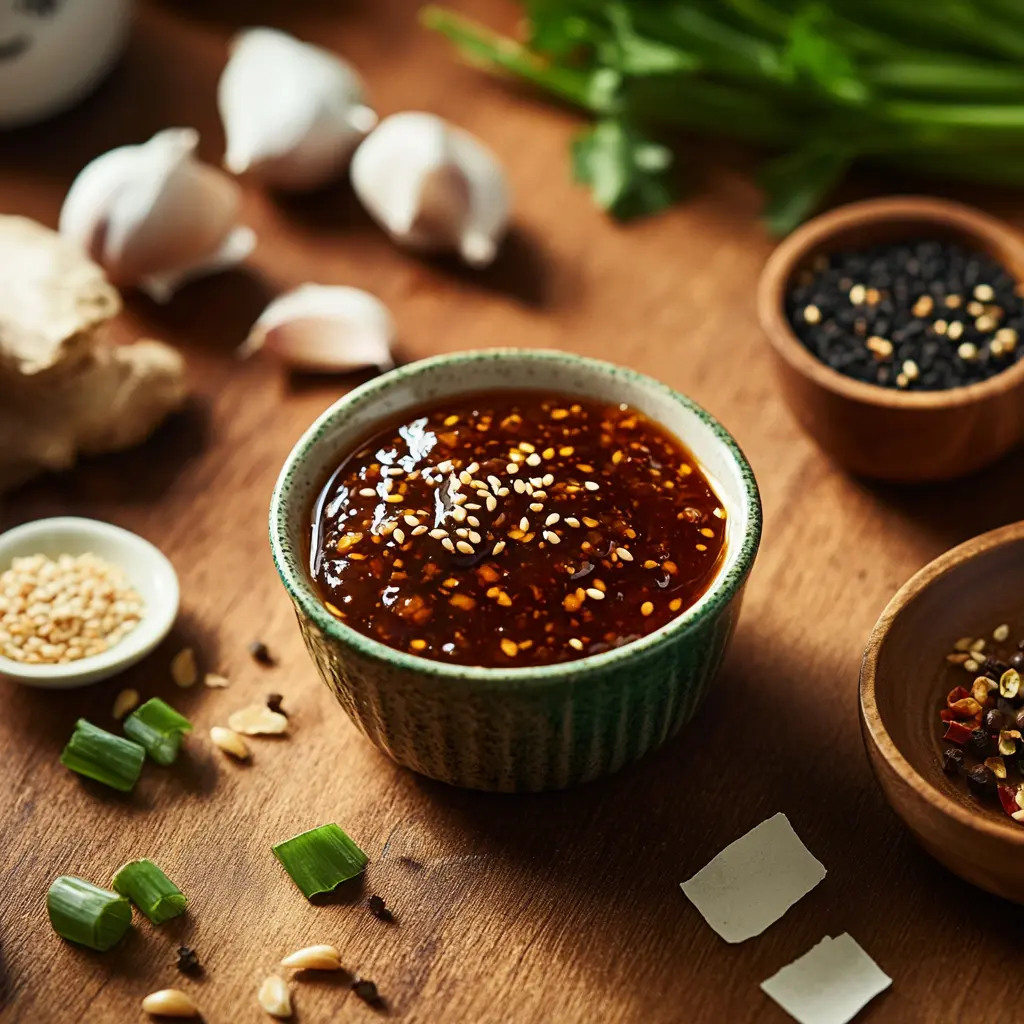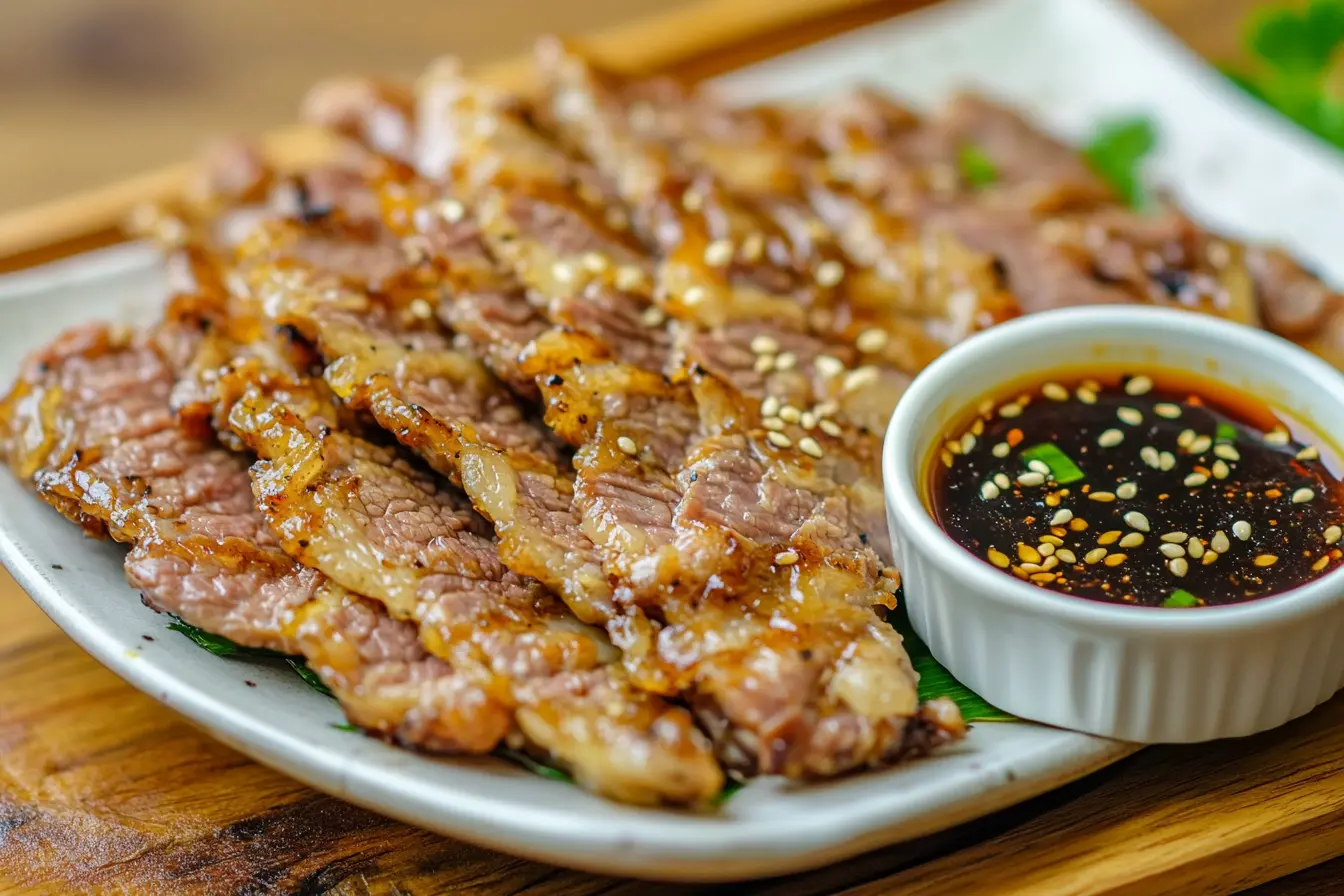There’s a unique flavor that defines Korean cuisine—savory, sweet, and aromatic all at once. If you’ve ever enjoyed a crispy bite of meat jun, you’ve likely been introduced to its accompanying sauce, a perfect blend that enhances every bite. The beauty of meat jun sauce is that it’s simple to prepare yet delivers a depth of flavor that makes your dishes unforgettable.
Whether you’re an experienced home cook or someone looking to try something new in your kitchen, this guide will take you step-by-step on how to make the perfect meat jun sauce. From the ingredients you’ll need to the tips that elevate this sauce to a whole new level, by the end of this article, you’ll know exactly how to create this delicious Korean dipping sauce.
What is Meat Jun Sauce?
Before diving into the recipe, let’s first understand what makes meat jun sauce so special.
The Basics of Meat Jun Sauce
Meat jun sauce is a savory and slightly sweet dipping sauce that’s typically served with a Korean dish known as meat jun. This dish consists of thinly sliced beef that’s marinated, coated in egg, and fried until crispy. The sauce is what elevates the dish to an entirely new level, providing a balance of flavors that complements the tender, savory beef.
The sauce itself is made from a few simple ingredients, most notably soy sauce, sesame oil, garlic, sugar, and rice vinegar. These components come together to create a harmonious mixture that offers a unique combination of saltiness, nuttiness, sweetness, and tang.
Cultural Significance
In Korean culture, meat jun and its accompanying sauce are often served at family gatherings, special occasions, or even during casual meals. The sauce is an essential part of the meal, bringing depth and enhancing the flavors of the meat. It’s a perfect example of how a few ingredients, when combined properly, can result in a burst of flavor that leaves a lasting impression.
The Perfect Meat Jun Sauce Recipe
Now that you understand what makes meat jun sauce so important, it’s time to get to the heart of this guide: the recipe. Don’t worry, making this sauce is simple and can be prepared in just a few minutes.
Ingredients for Meat Jun Sauce
| Ingredient | Amount | Purpose |
|---|---|---|
| Soy Sauce | 3 tablespoons | Saltiness and base flavor |
| Sesame Oil | 1 tablespoon | Adds nuttiness and richness |
| Garlic (minced) | 2 cloves | For depth of flavor |
| Sugar | 1 tablespoon | Balances out the savory flavors |
| Rice Vinegar | 1 tablespoon | Adds tanginess and freshness |
| Ground Black Pepper | 1/2 teaspoon | For a little heat and warmth |
These ingredients are the foundation of your meat jun sauce. You may notice some variations based on regional preferences or personal tastes, but this combination is the perfect starting point for a balanced and flavorful sauce.
Step-by-Step Instructions for Making Meat Jun Sauce
- Combine Ingredients: In a small bowl, combine the soy sauce, sesame oil, minced garlic, sugar, rice vinegar, and ground black pepper.
- Whisk Together: Use a whisk or spoon to mix the ingredients thoroughly until the sugar dissolves completely. You want a smooth, uniform mixture without any lumps.
- Taste and Adjust: At this point, it’s crucial to taste the sauce. If you prefer a more tangy flavor, feel free to add a touch more rice vinegar. For extra sweetness, a little more sugar should do the trick.
- Serve Immediately: You can serve the sauce right away as a dip for your crispy meat jun, or let it sit for a few hours to allow the flavors to meld together and deepen.
Tips and Tricks for Perfecting Your Meat Jun Sauce
To ensure your meat jun sauce is as flavorful as possible, here are a few pro tips you can use when preparing it.

Balancing Sweet and Savory Flavors
The key to a great meat jun sauce is achieving the perfect balance between sweetness and savory depth. If the sauce is too salty, it will overpower the dish, and if it’s too sweet, it will mask the flavors of the meat. Here’s how to balance the flavors:
- Adjust the Soy Sauce: Soy sauce provides the saltiness, so be careful not to overdo it. Start with the recommended amount, then taste and adjust as needed.
- Sweetness Balance: Sugar is the main ingredient that balances out the saltiness, but be cautious. A little goes a long way, so start small and increase it gradually.
Enhancing the Aroma of Meat Jun Sauce
The aroma is just as important as the flavor. To really elevate your meat jun sauce, try adding a few extra ingredients:
- Add Fresh Ginger: Fresh ginger can enhance the sauce’s aroma, providing a zesty and spicy kick that complements the other ingredients.
- Toast Sesame Seeds: If you want to take your sauce to the next level, lightly toast some sesame seeds and sprinkle them on top. The toasted sesame adds both texture and a deeper, nuttier flavor.
Adjusting for Personal Taste
One of the best parts about making meat jun sauce is how customizable it is. You can play around with the ingredients to suit your preferences. For example:
- If you want a spicier version, consider adding a small amount of gochujang (Korean chili paste) or chili flakes.
- For a sweeter version, increase the sugar or try adding a little bit of honey for a more complex sweetness.
Experimenting with these changes will help you find the perfect flavor profile for your taste buds.
Creative Ways to Use Meat Jun Sauce
While meat jun sauce is most commonly used with meat jun, it can actually be a versatile addition to other dishes as well. Here are a few creative ways to use the sauce:
Pairing Meat Jun Sauce with Different Dishes
- Classic Meat Jun: Obviously, meat jun is the star of the show. The crispy, marinated beef pairs perfectly with the savory sauce, making each bite an explosion of flavor.
- Korean BBQ: If you’re hosting a Korean BBQ or grilling meats at home, meat jun sauce works as a delicious dipping sauce for grilled beef, pork, or chicken.
- Stir-Fried Dishes: Use it as a savory sauce for stir-fried vegetables, rice, or noodles. It adds a rich flavor without overpowering the dish.
Meat Jun Sauce Beyond Meat Jun
Did you know that meat jun sauce isn’t just for dipping? Here are a few ways you can use it creatively:
- Marinade for Meats: You can use this sauce as a marinade for chicken, beef, or pork. Let the meat sit in the sauce for a few hours before grilling or frying, and you’ll have a flavorful, tender dish.
- Salad Dressing: For a unique twist, try using meat jun sauce as a dressing for Asian-inspired salads. It brings a balance of savory, sweet, and tangy flavors that perfectly complement fresh vegetables.
We also suggest to you an easy deer meat canning recipe with pro tips.
Frequently Asked Questions (FAQs)
Can I store Meat Jun Sauce?
Yes! You can store meat jun sauce in an airtight container in the fridge for up to a week. If you notice that the sauce has thickened slightly after refrigeration, just stir in a little warm water to return it to the right consistency.
How do I make Meat Jun Sauce spicier?
To add some heat to your sauce, consider adding chili flakes, gochujang (Korean chili paste), or fresh minced chili peppers. Start small and gradually increase the amount to get the perfect level of spice for your taste.
Can I use a substitute for sesame oil?
If you don’t have sesame oil on hand, you can use other oils like olive oil. However, note that it won’t provide the signature nutty flavor of sesame oil, which is integral to the sauce’s unique taste.
Conclusion: Elevate Your Korean Meal with Meat Jun Sauce
Making the perfect meat jun sauce is easy and rewarding. With a few simple ingredients and a little bit of practice, you can create a sauce that enhances your meals and brings a taste of Korea to your kitchen. Whether you’re preparing a family dinner, hosting a barbecue, or just experimenting with new flavors, this sauce will take your dishes to the next level.
So, next time you’re craving something savory, sweet, and utterly delicious, give this recipe a try. Don’t forget to share your experience in the comments below or on social media! What unique twist did you add to your meat jun sauce? We’d love to hear how you made it your own. Happy cooking!

